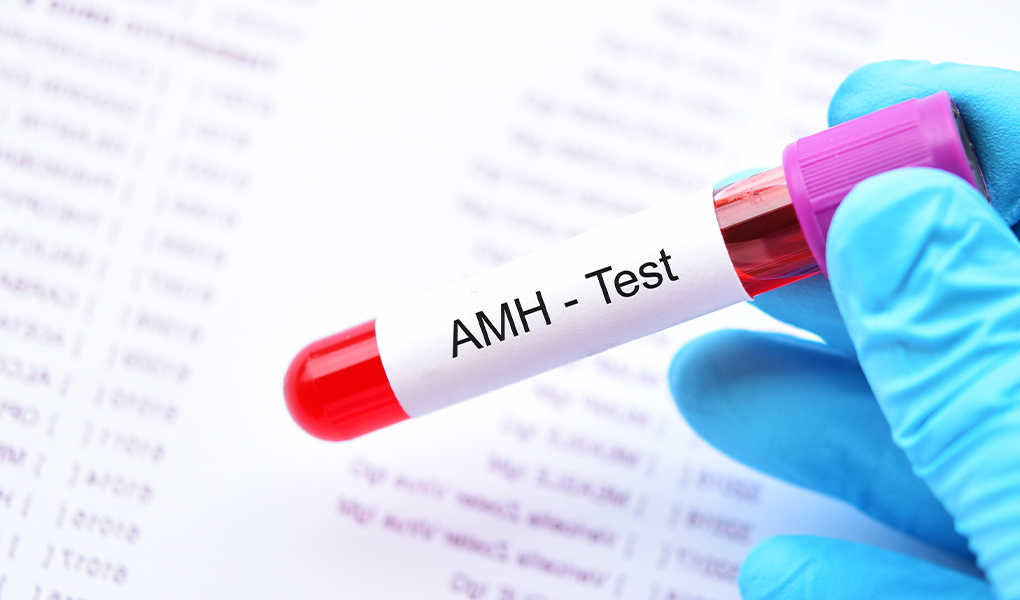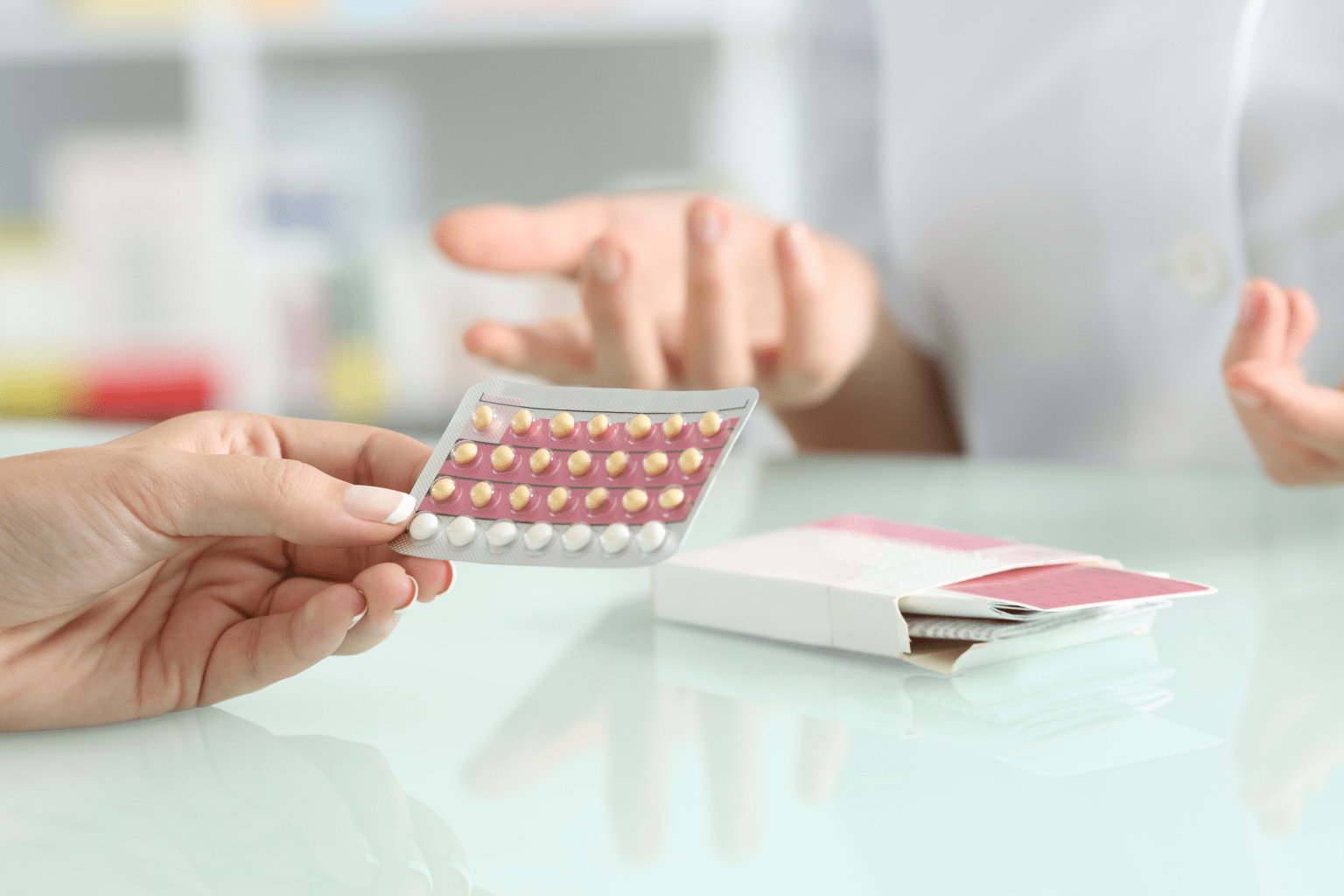“Your AMH is low. You need to freeze your eggs or start IVF immediately.”
If you’ve heard these words from your doctor, you know how devastating they can be. That single blood test result can feel like a death sentence for your dreams of motherhood.
But what if I told you that low AMH isn’t the fertility death sentence most doctors make it out to be?
In this blog post, I’m going to break down:
- What AMH actually is and why doctors use it to measure fertility
- How conventional medicine often misinterprets AMH results
- What scientific research really shows about low AMH and natural conception
- Why your AMH number might be temporarily lower for reasons unrelated to fertility
- A functional medicine perspective on AMH that goes beyond basic lab ranges
- The five factors that impact egg quality that have nothing to do with AMH
- Practical, evidence-based strategies to improve egg quality naturally
Let’s start by understanding exactly what AMH is and why it’s become such a significant focus in fertility assessments.
What is AMH and Why Does Everyone Talk About It?
AMH (Anti-Müllerian Hormone) is produced by the small follicles in your ovaries. It’s used as a marker of your ovarian reserve—essentially, how many eggs you have left.
The standard thinking goes like this:
Lower AMH = fewer eggs = lower fertility = need for immediate intervention.
But AMH only tells you about egg quantity, not egg quality. And when it comes to conception, quality matters far more than quantity. To fully understand why this distinction matters so much, let’s look more closely at what AMH actually does in your body and how fertility specialists use it.
Understanding AMH in Greater Detail
Unlike men who produce new sperm constantly, women are born with all the eggs they’ll ever have—typically around 1-2 million immature eggs. These eggs are stored as immature oocytes within tiny sacs called follicles in the ovaries.
During each menstrual cycle, several follicles begin to grow and develop under hormonal influence, but typically only one follicle fully matures and releases an egg (ovulation). The rest of those developing follicles naturally die off.
AMH is produced by cells surrounding these developing follicles that haven’t yet been selected for ovulation. Think of AMH as a measurable signal that indicates your “waiting room” of immature eggs—essentially how many eggs are still in reserve, waiting for their chance to develop and potentially become fertilized..
Here’s why AMH became popular in fertility assessments:
- It reflects your remaining egg supply: As women age, both the total number of eggs and growing follicles decline, resulting in lower AMH.
- It’s cycle-independent: Unlike other hormones that fluctuate throughout your cycle, AMH remains relatively stable, so you can get tested any day.
- It predicts response to IVF: Women with higher AMH typically produce more eggs during IVF stimulation.
- It helps detect certain conditions: Very high AMH might indicate PCOS, while very low AMH could suggest primary ovarian insufficiency.
But here’s what AMH truly tells us versus how it’s often misinterpreted:
What AMH DOES tell us:
- An estimate of how many eggs you have left
- How many eggs might be retrieved in an IVF cycle
- Whether menopause might arrive earlier than expected
What AMH DOES NOT tell us:
- The quality of your eggs
- Your ability to conceive naturally
- Whether you’ll have a successful pregnancy
- Your “fertility expiration date”
With this in mind, let’s examine what scientific research actually reveals about the relationship between AMH levels and natural conception success..
Here’s What Research Actually Shows About Low AMH
When most women hear they have low AMH, they immediately assume their dreams of motherhood are over. I’ve seen the panic in women’s eyes when they get this news – but take a deep breath, because research tells a very different story.
Several eye-opening studies should give you hope if you’ve received a low AMH diagnosis:
The Hope-Giving Time to Conceive Study: Researchers followed 750 women between ages 30-44 who were trying to conceive naturally. What they discovered challenges everything most doctors tell you – women with diminished ovarian reserve (AMH < 0.7 ng/mL) were just as likely to conceive as those with normal AMH. In fact, women with low AMH had an 84% probability of conception after 12 months, compared to 75% in women with normal AMH [1]. If anything, the low AMH group did slightly better!
Recent Research: The largest and most recent study (2024) of 3,150 women found a modest difference in conception rates between women with low versus normal AMH. The monthly chance of conception was 11.2% for the low AMH group compared to 14.3% for normal AMH [2]. Yes, there’s a difference, but it’s relatively small – nowhere near the fertility catastrophe many women are led to believe.
What Multiple Studies Tell Us: A thorough analysis of 11 studies with 4,388 women concluded bluntly that “Serum AMH levels have poor predictive value for natural pregnancy” – whether you’re younger or older [3].
The evidence is clear: AMH is not a crystal ball for your fertility.
Even the American Society for Reproductive Medicine says AMH as an independent variable is only weakly predictive of pregnancy at best [4].
Given these research findings, don’t rush into expensive, invasive fertility treatments based solely on an AMH number.
In fact, before making any decisions, it’s important to understand that several temporary factors could be artificially lowering your AMH result—something your doctor probably didn’t mention.
Your AMH Number Might Be Lower for Other Reasons
Before you start Googling fertility clinics, let’s talk about something your doctor probably didn’t mention: several temporary factors could be artificially lowering your AMH result.
Could it be a vitamin D deficiency?
The connection between vitamin D and AMH is fascinating. In one eye-opening study, infertile women with vitamin D deficiency saw their AMH levels jump from 0.39 to 0.92 ng/mL after just three months of supplementation [5]. That’s a whopping 136% increase!
Imagine being told you have “diminished ovarian reserve” when all you needed was some sunshine vitamin!
Did you get tested during winter?
AMH levels are typically about 18% lower in winter than in summer [6]. This seasonal variation appears to be connected to sun exposure and vitamin D production. If you received your low AMH diagnosis during the darker months, your levels might be significantly higher come summer.
Are you on hormonal birth control?
Women currently using hormonal contraceptives have AMH levels that are 25.2% lower than women who’ve never used them [7]. And thankfully, this effect is reversible – your levels should normalize within a year after stopping.
If you’ve recently ditched the pill to start trying for a baby (as many women do), your AMH reading might be artificially depressed. Give your body 3-6 months to reset before you test, or at least interpret your current results with this knowledge in mind.
Is stress affecting your results?
The mind-body connection is real. Research has found significant negative correlations between stress markers and AMH levels [8]. As one study directly stated: “Higher psychological stress was related to a decreased AMH level in infertile women.”
The very stress about fertility could be temporarily lowering your AMH.
Beyond these temporary influences on your AMH readings, we need to reconsider how we interpret AMH results altogether.
This is where a functional medicine perspective offers valuable insights that conventional fertility assessments often miss.
A Functional Medicine Perspective on AMH
Conventional medicine and functional medicine look at lab values very differently, and AMH is no exception. Here’s how the functional approach to AMH differs from what you’ll typically hear in a fertility clinic:
Conventional vs. Functional Reference Ranges
In conventional medicine, lab values are considered “normal” if they fall within reference ranges based on population averages. This means you might be told your AMH is “within normal limits” even if it’s at the very bottom of the range.
Functional medicine takes a different approach. Rather than merely classifying results as “normal” or “abnormal,” functional practitioners look for optimal ranges that support thriving health, not just absence of disease.
For AMH, functional medicine practitioners might consider:
- Optimal AMH: 2.0-3.0 ng/mL
- Good AMH: 1.0-2.0 ng/mL
- Functional Low: 0.7-1.0 ng/mL
- Low: Below 0.7 ng/mL
But even more importantly, functional medicine looks at AMH in the context of your entire health picture, not as an isolated number.
The Functional Medicine Approach to Low AMH
A functional medicine practitioner won’t just look at your AMH number and give you a prognosis. Instead, they’ll ask crucial questions like:
- What’s driving the low AMH? Is it genetic, related to autoimmunity, connected to metabolic issues, or linked to environmental toxins?
- What do other fertility markers look like? How’s your FSH, LH, estradiol, progesterone, DHEA, and thyroid function? AMH doesn’t exist in isolation.
- What’s happening with your overall health? How’s your sleep, stress, digestion, inflammation levels, and nutrient status? All these factors influence egg quality.
- How can we support your body’s natural ability to create healthy eggs? Rather than bypassing your body’s systems with medical interventions, how can we optimize your biology?
The focus shifts from “how many eggs do you have left?” to “how can we make the eggs you do have as healthy as possible?”
Low AMH as a Messenger, Not a Sentence
Functional medicine views low AMH not as a fertility death sentence but as your body sending an important message:
- Your cellular health may need support
- Your mitochondrial function might be compromised
- Your metabolic health could use optimization
- Your body might be experiencing more stress than it can handle
These are all things you can address with the right approach. Rather than seeing low AMH as the end of your fertility journey, functional medicine sees it as valuable information that can guide your healing path.
The “Thrive, Don’t Just Survive” Philosophy
Functional medicine is built on the philosophy that we should aim to thrive, not just survive. This applies perfectly to reproductive health. The goal isn’t just to meet minimum thresholds that classify you as “normal” – it’s to optimize your health so your body can function at its absolute best.
With AMH, this means not just accepting a low-normal level as “good enough,” but working to create the conditions where your ovaries and eggs can function optimally, regardless of the number of eggs you have left.
So, what do you do if you have low AMH levels?
First, don’t panic. Instead, focus on the factors that actually determine whether your eggs are healthy enough to create life—factors that have nothing to do with your AMH number.
5 Factors That Impact Egg Quality (That Have Nothing to Do with AMH)
1. Metabolic Health
Your eggs need massive amounts of cellular energy to develop properly. Poor metabolic health = poor egg quality. This includes:
- Blood sugar balance
- Mitochondrial function (your cellular powerhouses)
- Insulin sensitivity
2. Oxidative Stress
Oxidative stress is like rust in your body. It damages cells—including egg cells. Reducing inflammation and increasing antioxidant intake can dramatically improve egg quality.
3. Hormonal Balance
Your reproductive hormones need to be in harmony for proper egg development. This includes:
- Thyroid function (even “subclinical” thyroid issues impact egg quality)
- Sex hormone balance (estrogen, progesterone, testosterone)
- Stress hormone regulation (cortisol)
4. Nutrient Status
Your eggs need specific nutrients to develop properly:
- CoQ10 for cellular energy
- Folate for DNA health
- Omega-3 fatty acids for cell membrane health
- Vitamin D for hormone production
- Zinc and selenium for antioxidant protection
5. Environmental Toxin Exposure
Everyday toxins in your environment can damage egg quality:
- Endocrine disruptors in plastics and personal care products
- Heavy metals in water and food
- Pesticides and herbicides in non-organic foods
The good news about these factors is that they’re largely within your control.
Even better, you have a specific timeframe to influence them before ovulation occurs.
The 90-Day Window
All your eggs go through a 90-day maturation process before ovulation.
For 90 days, your eggs are incredibly responsive to your body’s environment. What you eat, how you move, what you’re exposed to, and how you manage stress all directly impact the health of the egg that will be released in 3 months.
Understanding this 90-day maturation process gives you a clear timeframe for action.
If you’ve been diagnosed with low AMH, here are specific steps to take before assuming the worst
If you’ve been diagnosed with low AMH, take these steps before assuming the worst:
- Get your vitamin D levels tested (many women are deficient without knowing it)
- If tested during winter, consider retesting in the summer months
- If you recently stopped hormonal birth control, wait a few months before testing or retesting
- Implement stress-reduction practices like meditation, gentle yoga, or whatever helps you relax
- Get a second opinion from a doctor who understands these nuances
These simple steps could save you unnecessary worry, not to mention thousands of dollars in fertility treatments you might not even need.
The Bottom Line on AMH
If you’ve been told your AMH is low, remember:
- AMH measures quantity, not quality
- Egg quality matters more than quantity
- You have a 90-day window to improve egg quality
- Many women with low AMH conceive naturally
- Focus on the factors you can control
Your fertility story isn’t written in a single blood test. Your body has an incredible ability to heal and create life when given the right environment.
Preethi
P.S. Have you been diagnosed with low AMH and want to improve your chances of conception? Book a consultation with our fertility specialists to learn how we can help you optimize your egg quality naturally.
Citations:
[1] https://jamanetwork.com/journals/jama/fullarticle/2656811
[2] https://pubmed.ncbi.nlm.nih.gov/38964587/
[3] https://pmc.ncbi.nlm.nih.gov/articles/PMC8548671/
[5] https://pmc.ncbi.nlm.nih.gov/articles/PMC7352921/
[6] https://pmc.ncbi.nlm.nih.gov/articles/PMC7352921/



